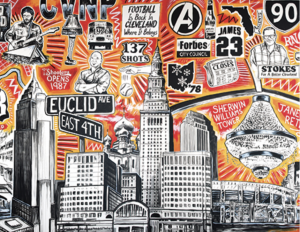
Florence Ellinwood Allen: The First Woman State Supreme Court Justice from The Brennan Center
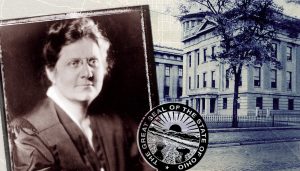
Florence Ellinwood Allen: The First Woman State Supreme Court Justice from The Brennan Center
A century later, her story of perseverance and support from women’s rights activists still inspires.
by Amanda Powers
One hundred years ago, Florence Ellinwood Allen became the first woman to serve as a state supreme court justice. It was one of many firsts throughout her life: she was also the first woman in America to serve as a prosecutor, be elected as a trial court judge, and be appointed to a federal appeals court. Allen overcame numerous barriers based on her gender throughout her legal career, often with the support of grassroots suffragists who rallied behind her. Her achievement is underscored by the fact that there wasn’t another woman on a state supreme court for nearly 40 years.
Allen spent her first year of law school at the University of Chicago, where she was the only woman. She later wrote in her memoir that it was “terrifying to have to enter a classroom first while a hundred men stood aside.” Allen transferred to New York University, which had been accepting women to its law school since 1890. There, she described feeling “on equal terms with men” and became involved in the women’s suffrage movement.
Allen graduated law school second in her class in 1913 and returned home to Ohio, where she opened a private law practice, volunteered for the Legal Aid Society, and continued campaigning for suffrage. While advocating for a ballot initiative to grant Ohio women the right to vote, Allen gave speeches in 88 counties across the state. She later argued and won a case before the state supreme court that granted women the right to vote in municipal elections, although the policy was soon overturned by referendum. In 1919, Allen was appointed as a prosecutor in Cuyahoga County, a national first for a woman.
Just 10 weeks after the ratification of the 19th Amendment in 1920, Allen was elected to the Cuyahoga County Court of Common Pleas and became the first woman elected to judicial office in the country. Because she entered the race late, she had to collect signatures to be listed on the ballot. Her friends in the Woman Suffrage Party circulated petitions throughout the county and collected enough signatures to complete the nomination process. Upon Allen’s election, her male colleagues on the court suggested that she should only rule on marital disputes. Allen disagreed, responding that since she had never married, “she lacked sufficient expertise in the domestic domain,” unlike the men on the bench.
The women’s movement remained deeply involved throughout Florence’s tenure on the court. When Allen called attention to disorganization at the court due to the lack of a chief justice, women’s groups contacted the press and organized mass meetings to raise awareness of the problem. Allen later wrote that this burst of civic engagement among women occurred “because for the first time they were serving on the jury and also because they saw a member of their sex sitting on the bench . . . in a way that made them feel a special ownership in the Court of Common Pleas.”
In 1922, Allen ran for a seat on the Ohio Supreme Court. She was the underdog against a decorated World War I veteran backed by the powerful state Republican party. However, Allen prevailed by a significant margin. Her campaign was driven by “Florence Allen clubs,” which had been organized by suffragists in almost every single Ohio county. Allen relied on this network of volunteers to circulate petitions, organize door-to-door canvassing, schedule speaking engagements, and secure endorsements from local newspapers.
 Library of Congress
Library of CongressAllen wrote in her memoir that on her first day on the bench, she “was aware of a certain uneasiness among the men” due to her gender. Allen overcame their uncertainty and asserted her judicial authority during her 11 years on Ohio’s highest court, issuing decisions on questions of education, labor, municipal governance, taxes, and more.
In 1928, the Florence Allen clubs returned in force, and Allen was reelected by a margin of some 350,000 votes.
After unsuccessful campaigns for the U.S. Senate and House, Allen was nominated by President Franklin D. Roosevelt to the U.S. Court of Appeals for the Sixth Circuit in 1934. She faced considerable opposition throughout the confirmation process but found support from unlikely allies. Ohio Supreme Court Justice Will Stephenson, who had staunchly opposed the idea of a woman justice when Allen was first nominated to share the bench with him, traveled to Washington to testify that “there is no Court too big for Judge Allen.” Allen was confirmed by the Senate, becoming the first woman to sit on a federal appeals court bench. She remained in this position for 25 years.
On the Sixth Circuit, Allen maintained that her role as a judge should not be impacted by her gender. Upon noticing that the chief judge was not assigning her to hear any cases involving patents, Allen insisted that she no longer be excluded from this category. She later wrote several opinions on patent-related cases that were affirmed by the Supreme Court.
Allen received national attention when she presided over a three-judge panel in the case of Tennessee Electric Power Co. v. Tennessee Valley Authority, ruling that the federal government had the authority to build dams and reservoirs and regulate interstate commerce on interstate waterways like the Tennessee River.
This case raised Allen’s national profile, and she was considered for the Supreme Court by several presidents. Many allies called for Allen to be nominated, including First Lady Eleanor Roosevelt, who wrote in her newspaper column in 1948, “if a President of the United States should decide to nominate a woman for the Supreme Court, it should be Judge Allen.”
Florence Ellinwood Allen was a trailblazer who understood the importance of diversity in the courtroom. In her words, “When women of intelligence recognize their share in and their responsibility for the courts, a powerful moral backing is secured for the administration of justice.”
A century after her election to the Ohio Supreme Court, Allen’s story reminds us of the importance of a representative judiciary to affirm the legitimacy of a system that administers justice for all. There is still much work to be done on that front: as of last year, only about one-third of active lower federal court judges were women, and 12 states had only one woman on the bench of their state supreme court.
See the Cuyahoga River, Clean Water Act Video that won a St. Ignatius senior 2nd prize in C-SPAN competition

Cleveland’s deep connection to the Ukrainian people 2.28.2022
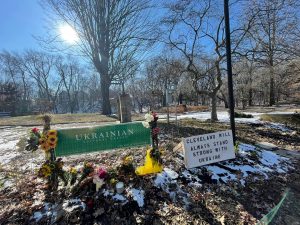
Garrett A. Morgan, Cleveland’s ‘Black Edison,’ created today’s traffic light and gas mask by Brenda Cain, Plain Dealer, Feb 4, 2022
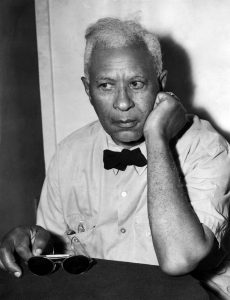
African Americans built a tiny enclave on the outskirts of toney Chagrin Falls: Black History Month
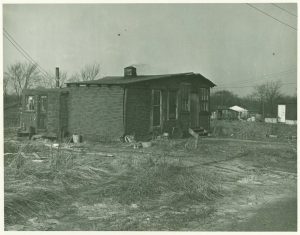
African Americans built a tiny enclave on the outskirts of toney Chagrin Falls: Black History Month
by Brenda Cain, Plain Dealer Feb 7, 2022
The link is here
Zelma Watson George, the Cleveland opera singer who had a president’s ear: Black History Month Untold Stories by Brenda Cain, Plain Dealer
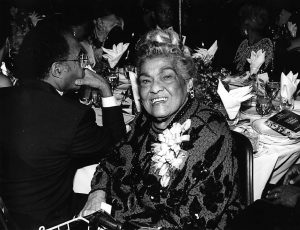
“Having Given Them Bayonets, We Will Not Withhold the Ballot”- Republicans and Black Suffrage in Reconstruction Ohio, 1865-1867 by Jacob T Mach
“Having Given Them Bayonets, We Will Not Withhold the Ballot”- Republicans and Black Suffrage in Reconstruction Ohio, 1865-1867
by Jacob T Mach, 2020, Master of Arts (MA), Bowling Green State University, History.
Ohio politics during the Reconstruction era has received sparse treatment by historians. Not until 1970 with Felice Bonadio’s North of Reconstruction was there a monograph solely dedicated to Ohio politics during the era. Robert Sawrey wrote his Dubious Victory in 1992, but still the historiography on Reconstruction Ohio remains dramatically underdeveloped. In Ohio, the question of African American suffrage was the single most divisive issue facing politicians during the era. Radical Republicans brought a referendum before the people of Ohio in 1867 to change the state constitution to protect the suffrage rights of both white and black males above the age of 21. The measure failed 216,987 votes (45.9 percent) to 255,340 (54.1 percent) votes. The failure of the suffrage amendment disheartened many Radical Republicans across Ohio and the rest of the North, yet Ohio Republicans managed to elicit more support for suffrage than most states in the North. Such support did not arise randomly; it intentionally developed over a three-year period beginning after the Civil War. Two primary research questions drive this project: 1) Did suffrage become a crucial issue in the state of Ohio earlier than the existing historiography suggests, 2) why were Ohio radicals able to generate more support for black suffrage within the Republican party than in other states in the North? By showing that Republican support (through Congressional voting records, public support via speeches and letters, and by Republican-sympathetic papers throughout the state) for black suffrage existed in significant numbers in 1865 (prior to 1866-1867, as Bonadio, Sawrey and others suggest) in both the Western Reserve and in other parts of the state and only continued to grow until the referendum in the fall of 1867, this project will argue that black suffrage was not only being pursued by radicals, but ultimately by the vast majority of the Republican party. Ohio’s inability to secure black suffrage with overwhelming Republican support will in turn help to explain why other northern states achieved even less success in their pursuit of black suffrage.
Tom L. Johnson’s Tax School: The Fight for Democracy and Control of Cleveland’s Tax Machinery by Andrew L Whitehair
Tom L. Johnson’s Tax School: The Fight for Democracy and Control of Cleveland’s Tax Machinery
by Andrew L Whitehair, 2020, Master of Arts in History, Cleveland State University, College of Liberal Arts and Social Sciences.
Prior to Tom L. Johnson’s election to mayor of Cleveland in 1901, the city’s tax system was rife with inequality. Johnson sought to correct these inequalities by democratizing Cleveland’s tax system. To accomplish this aim, he established a new department in City Hall, called the “tax school,” which was designed to educate Clevelanders about the existing tax system’s failures as well as Johnson’s proposed solutions. The tax school worked to improve the tax assessment process by implementing a scientific approach, improving transparency, and soliciting citizen input. Johnson’s efforts, however, met with resistance from an entrenched business elite that employed the state legislature and courts to destroy Johnson’s tax school. Through political campaigns of misinformation, usurpation of the primary process, and stuffing key tax institutions with friendly partisans, these business elites conspired to control the tax machinery of Cuyahoga County. This study of Johnson’s efforts to democratically reform Cleveland’s tax system reveals how the city’s business elite colluded to destroy the tax school and to retain the levers of tax power. In providing the canonical account of Cleveland’s tax school, I situate the history of the tax school within a multi-party negotiation governed by unequal power relationships between business elites and the rest of society. The wealthiest Clevelanders possessed the greatest access to the tax system, and they used that access to rig the system in their favor.
In a State of Access: Ohio Higher Education, 1945 – 1990 by Jonathan Tyler Baker
 In a State of Access: Ohio Higher Education, 1945 – 1990
In a State of Access: Ohio Higher Education, 1945 – 1990
by Jonathan Tyler Baker, 2020, Doctor of Education, Miami University, Educational Leadership.
The link is here
In a State of Access is a historical study about the way public higher education in Ohio became both generally accessible to nearly every citizen while also offering elite undergraduate and graduate programs. This project grapples with the question of how national, state and regional factors – from the mid-1940s through the end of the 20th century – influenced the way Ohio’s leaders viewed the purpose of public higher education and influenced whether Ohio’s leaders chose to focus on making public higher education more selective or accessible. State leaders initially balked at the idea of funding public higher education. When they did decide to make the investment, ideological battles, economic stagnation and the state’s budget deficit continually influenced how state leaders viewed the purpose of public higher education. As a result, state leaders never succeeded in building a system of public higher education that reflected a clearly defined, well-organized purpose. This dissertation is the first full-length study about contemporary public higher education in Ohio and one of the few case studies of any state’s system of higher education. As the public and politicians at the state and national level pay more attention to the accessibility of higher education, and the role of a college degree in a globalized, service economy, a case study of Ohio helps us to better understand why public higher education is still struggling with problems over access.


